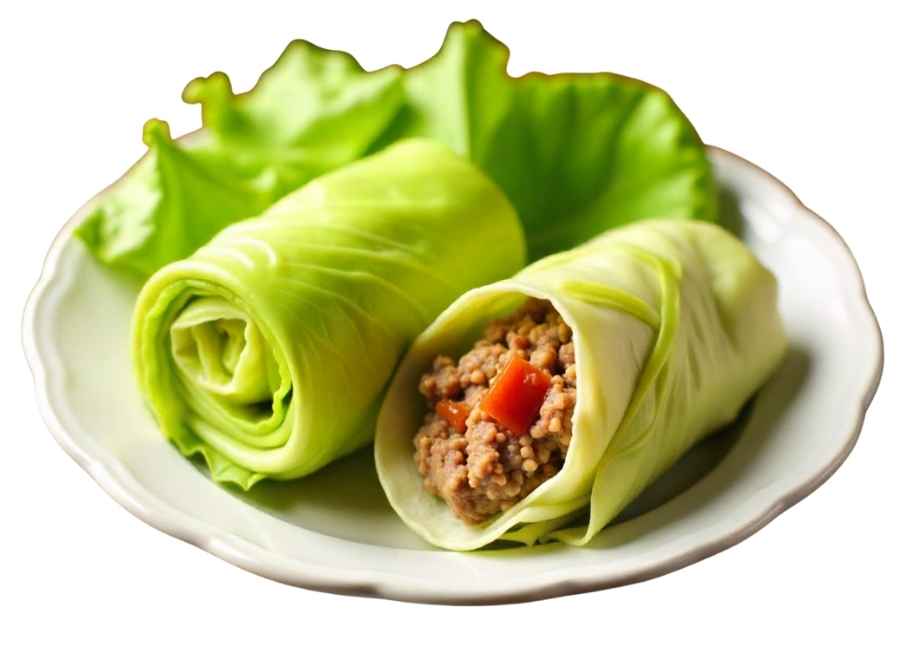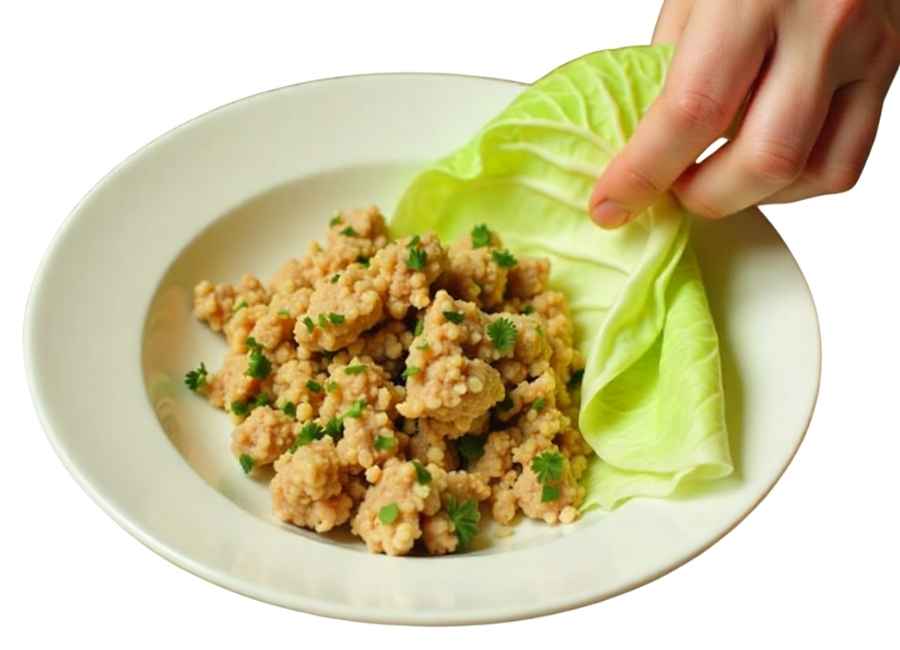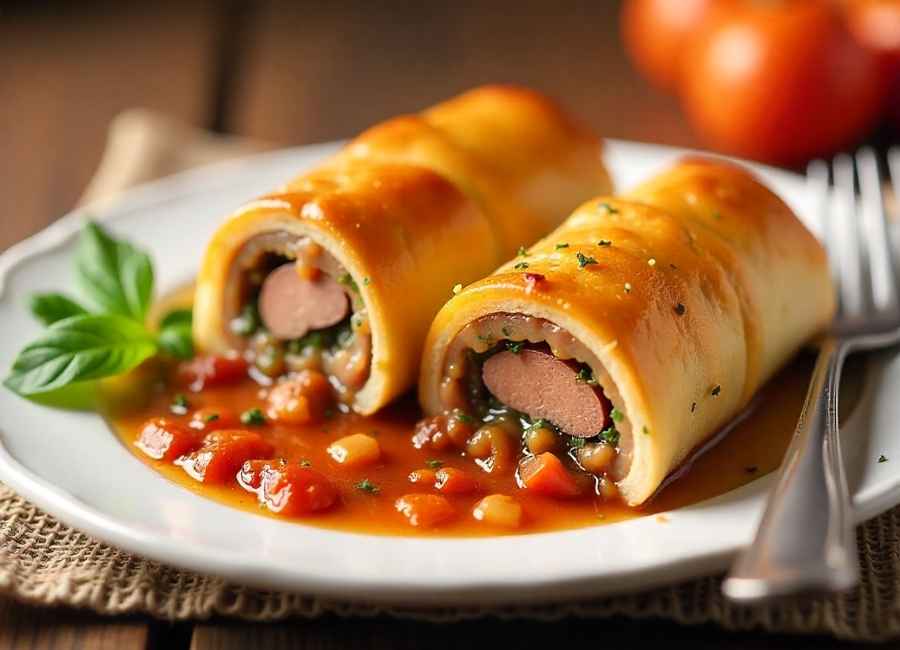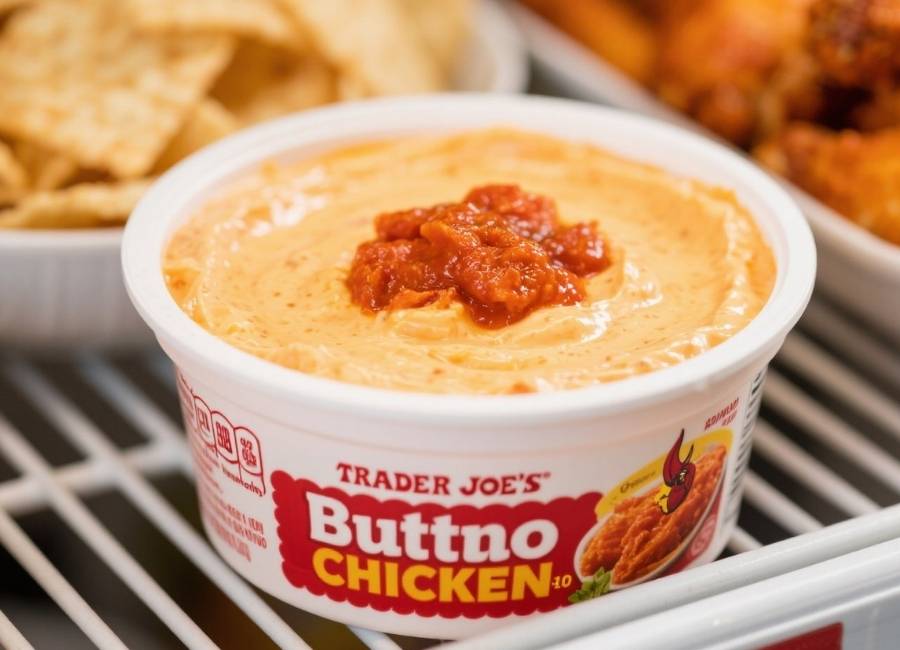German stuffed cabbage rolls, or “Kohlrouladen,” are a favorite comfort food in Germany. Tender cabbage leaves filled with seasoned meat and rice make a hearty meal that families have enjoyed for generations. If you want to try a traditional European recipe or need a filling dinner, learning to make this classic dish will bring real German flavors to your table.
This comprehensive guide will walk you through everything you need to make great German stuffed cabbage rolls, from choosing the best cabbage to using traditional cooking methods for tender, tasty results. Ists of blanched cabbage leaves filled with a savory mixture of ground meat, rice, and aromatics, then rolled tightly and braised in a rich sauce. The dish originated to stretch expensive meat with affordable vegetables and grains, making it economical and nutritious. (Russia vs. Germany: Different countries, same cuisine?, n.d.)
Most traditional German recipes use a mix of ground pork and beef for the filling, but different regions have twists. (Everything Rouladen: Don’t Miss This Traditional German Dish, n.d.) The rolls are usually served with mashed potatoes and a tangy sauce made from the cooking liquid, making a meal that fills you up. (Krautsh???chen, n.d.)
Essential Ingredients for Authentic Kohlrouladen

The Cabbage
Fresh green cabbage is the base of this dish. Choose cabbages that feel heavy and have tight, clean leaves. You’ll need one large outer leaf for each roll, so buy enough for your desired servings.
The Filling
For the most authentic taste, use a mix of ground pork and beef. Pork gives it richness, and beef adds depth and texture. Some people use ground veal for a milder flavor.
Partially cooked white rice helps hold the filling together and soaks flavor as the rolls cook. Long-grain rice works best because it keeps its shape better than short-grain rice.
Aromatics: Finely diced onions, garlic, and fresh herbs like parsley form the aromatic base. Some recipes include diced carrots or celery for additional depth.
The Braising Liquid
Traditional recipes use beef or vegetable broth mixed with tomatoes. This creates a rich sauce that flavors the rolls and keeps them moist as they cook. (Golubtsi Cabbage Rolls, n.d.)
Step-by-Step Preparation Method

Preparing the Cabbage Leaves
Cut out the core of the cabbage with a sharp knife, making a cone about 2 inches deep. Boil a large pot of salted water and gently put the cabbage in. As the outer leaves soften, which takes about 3 to 4 minutes, use tongs to remove them individually.
Keep going until you have 8 to 12 good leaves, depending on how many rolls you want to make. The leaves should be soft but not falling apart. Dry each leaf and cut down the thick center vein to make rolling easier.
Creating the Filling
Combine your ground meats in a large bowl with partially cooked rice, sautéed onions, minced garlic, and seasonings. Traditional seasonings include salt, black pepper, sweet paprika, and fresh parsley. (Stuffed Cabbage Roll, n.d.) Mix gently but thoroughly—overmixing can make the filling tough.
Some German families add a beaten egg to help bind the mixture, though this isn’t essential if you handle the filling carefully during rolling. (Kohlrouladen – German Cabbage Rolls, n.d.)
Rolling Technique
Put about 1/3 cup of filling near the base of each cabbage leaf. Fold the base over the filling, then fold in the sides and roll it up tightly toward the tip. The roll should be snug but not so tight that it splits while cooking.
You can use kitchen twine or toothpicks to hold each roll together, but if you roll them well, they should stay together independently. oking Methods and Techniques
Traditional Braising
Heat oil in a heavy-bottomed Dutch oven or braising pot. Brown the cabbage rolls on all sides, working in batches if necessary to avoid overcrowding. This step develops flavor and helps the rolls maintain their shape.
Return all rolls to the pot. Put all the rolls back in the pot and pour in your braising liquid, usually a mix of broth, diced tomatoes, and seasonings. The liquid should reach about halfway up the rolls. Cover the pot and let it simmer gently for 1.5 to 2 hours, turning the rolls once as they cook. Rowning, transfer the rolls to a covered casserole dish with the braising liquid. Cook at 325°F for approximately 2 hours, checking occasionally and adding liquid if needed.
Pressure Cooker Adaptation
You can also make this recipe in a pressure cooker, which cuts the cooking time to 20 minutes on high pressure with a natural release. Still, slow braising gives the dish a richer flavor.
Regional Variations Across Germany

Different parts of Germany have their own takes on Kohlrouladen. In the north, people often use more herbs and sometimes even fish fillings near the coast. In the south, you might find local sausages or unique spice mixes in the rolls. (Everything Rouladen: Don’t Miss This Traditional German Dish, n.d.)
Some regions wrap the rolls in bacon before braising, adding smoky richness to the finished dish. Others include mushrooms or root vegetables in the filling for additional texture and flavor complexity.
Serving Suggestions and Accompaniments
Kohlrouladen is usually served with creamy mashed potatoes that soak up the tasty sauce. German boiled potatoes or buttered spaetzle are also great sides.
The braising liquid is often cooked and strained to make a simple sauce. Some people like to thicken it with a bit of flour or cream for a richer taste. Traditional German sides like red cabbage, pickled beets, or simple green beans complement the rich flavors without overwhelming the dish.
Storage and Reheating Tips
German stuffed cabbage rolls improve with time, making them excellent candidates for meal preparation. Cooked rolls can be stored in the refrigerator for up to four days, keeping them covered in their braising liquid to prevent drying out.
Reheat the rolls gently in a covered dish, adding extra broth if needed. You can use the microwave for single servings, but the oven improves the texture.
Kohlrouladen freeze well for up to three months if wrapped properly. (How Long Do Cabbage Rolls Last in the Freezer?: A Comprehensive Guide, n.d.) Thaw them fully before reheating, and remember that the texture may be a bit softer after freezing.
Mastering Your German Kitchen Tradition
Creating authentic German stuffed cabbage rolls requires patience and practice, but the results reward you with a deeply satisfying meal that connects you to generations of German Home cooking. The key lies in the gentle handling of ingredients, proper seasoning balance, and allowing sufficient time for the flavors to meld during braising.
Use good-quality ingredients and take your time with each step. Everything matters, from the cabbage leaves to the filling. You can make Kohlrouladen at Home with some practice, which tastes just as good as in a restaurant.



















